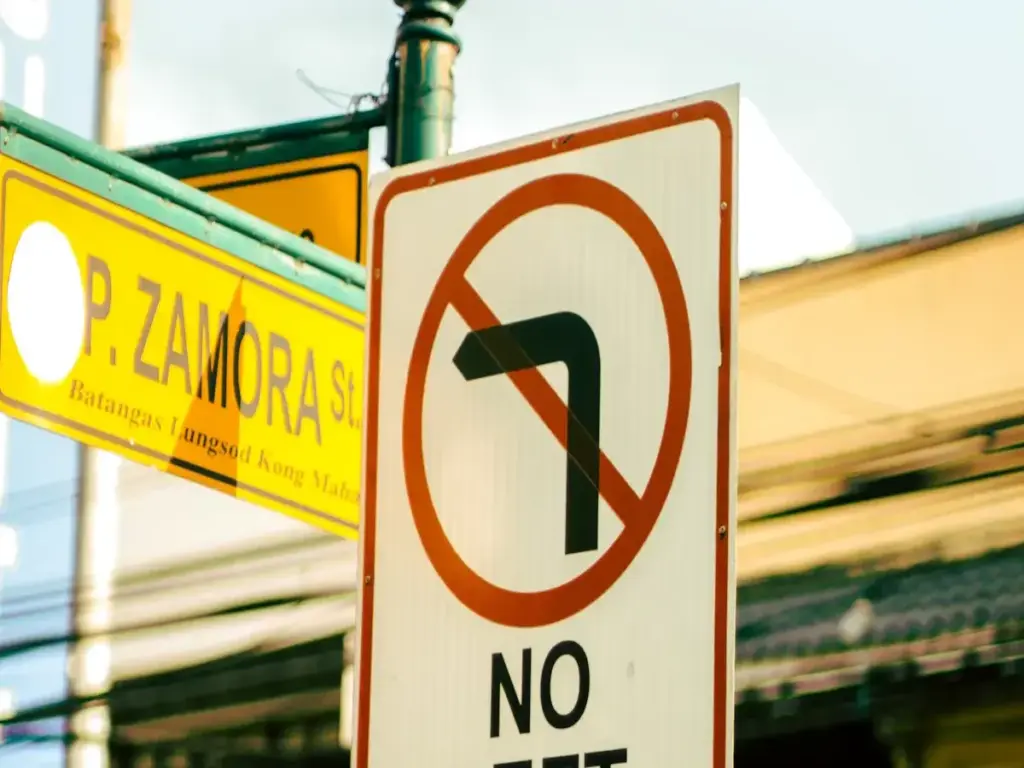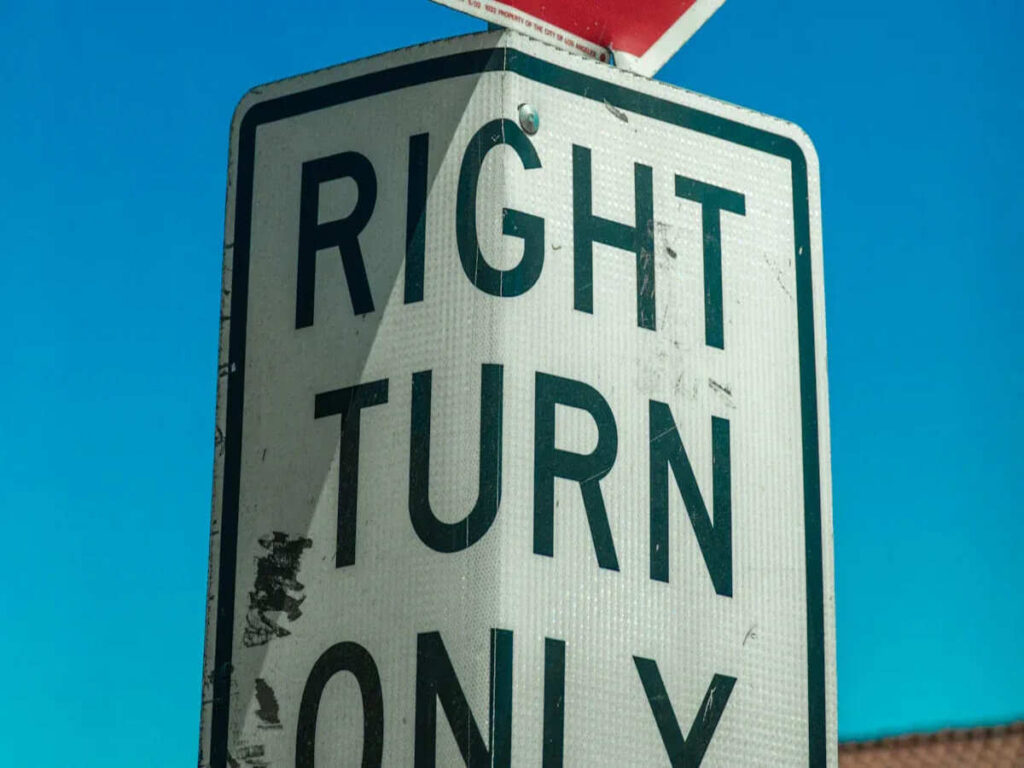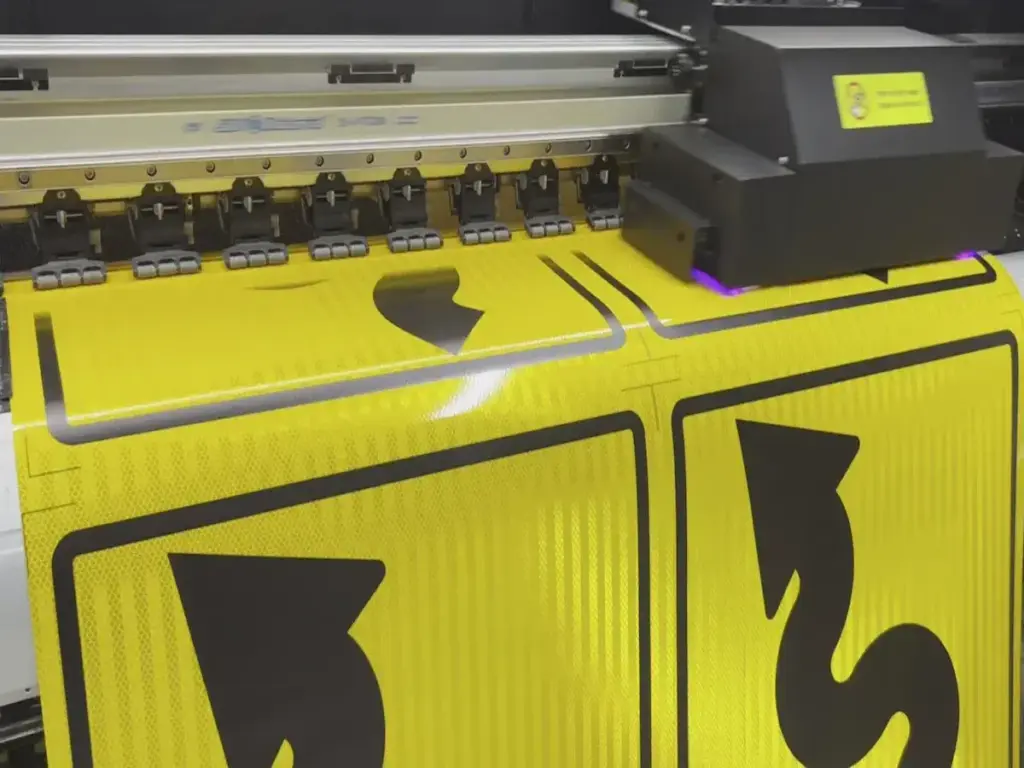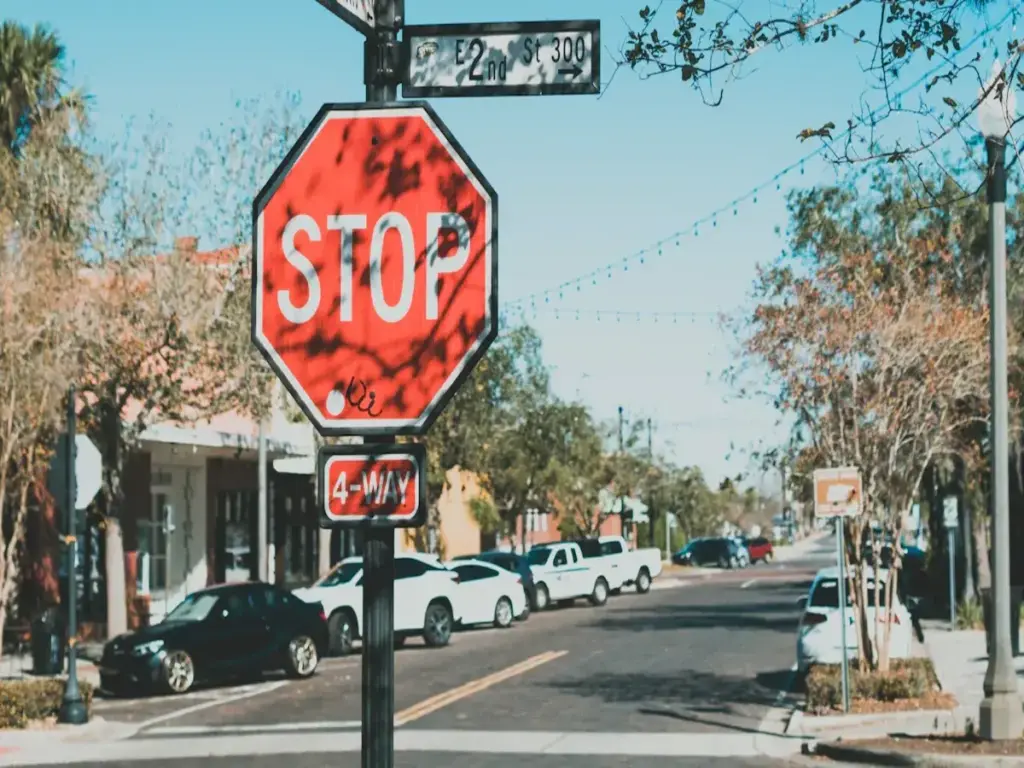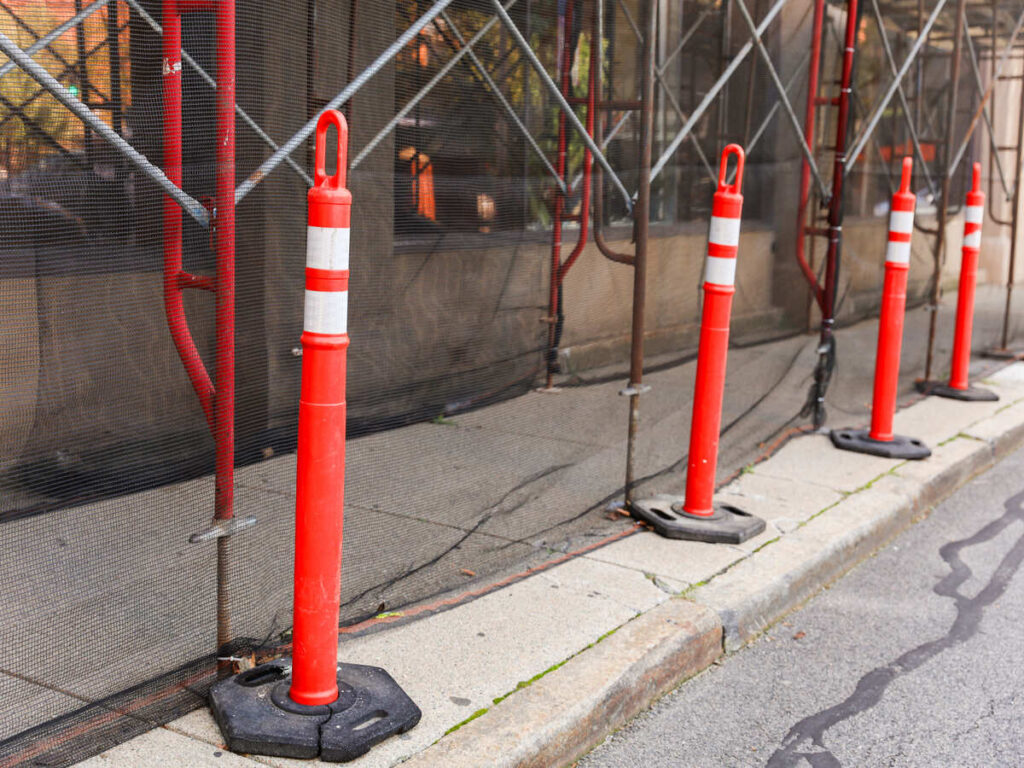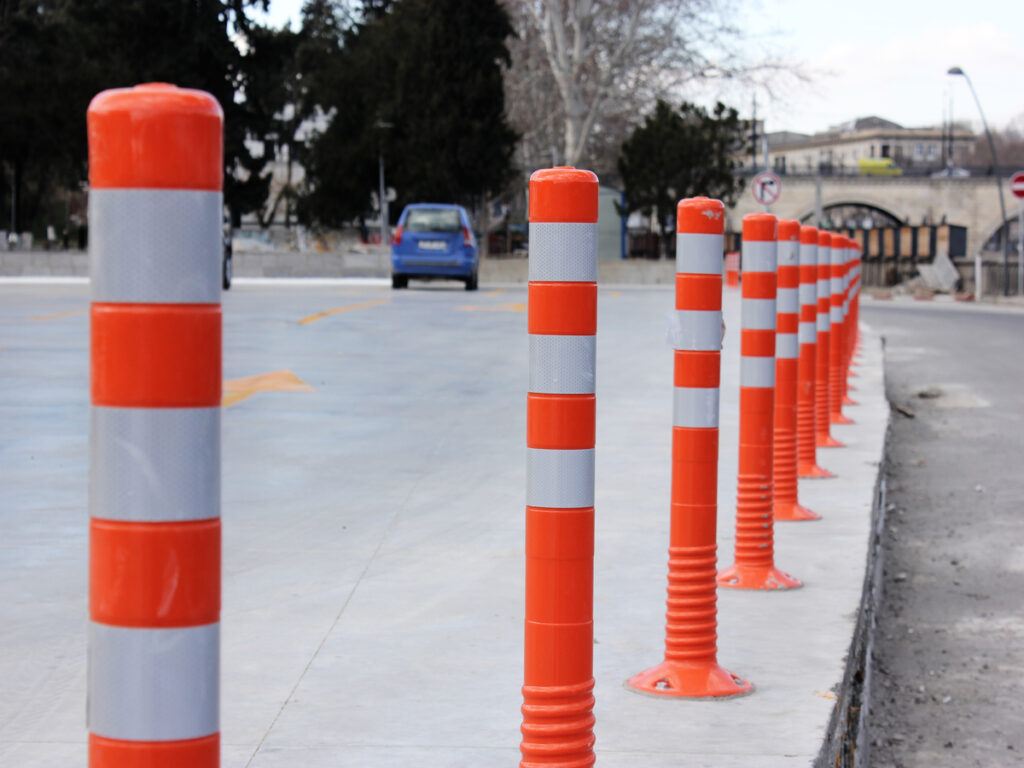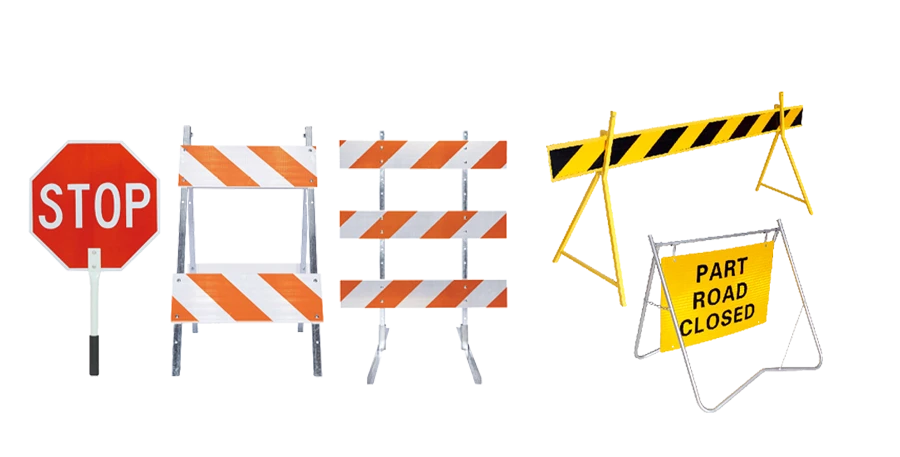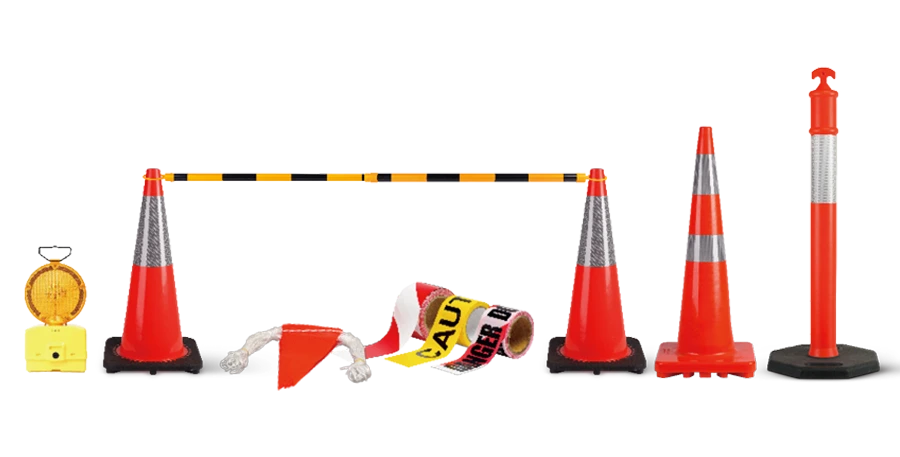
Lors de la sélection du métal pour les panneaux, l'épaisseur est très importante. Vous voulez que les panneaux de signalisation en métal soient beaux, dure longtemps, et rester fort. L'épaisseur du métal est appelée jauge. Un numéro de calibre inférieur signifie un métal plus épais et plus résistant. Par exemple, .063-l'aluminium de calibre est bon pour les panneaux extérieurs, tandis que l'aluminium de calibre .125 est meilleur pour les conditions météorologiques difficiles comme les vents forts ou les impacts.. Que ce soit pour des panneaux de signalisation métalliques ou des affichages intérieurs, la bonne épaisseur garantit la durabilité, protection contre les intempéries, et une apparence attrayante.
OPTRAFIC propose des panneaux de signalisation à vendre fabriqués avec du métal de première qualité dans une variété d'épaisseurs pour répondre à vos besoins spécifiques. Que vous ayez besoin de panneaux pour les autoroutes venteuses, zones de travail, ou rue urbaine, nos matériaux sont sélectionnés pour leur résistance, résistance aux intempéries, et durabilité à long terme.
Principaux à retenir
- Choisissez la bonne épaisseur de métal en fonction de l'endroit où va le panneau. Les métaux plus épais fonctionnent mieux pour les panneaux extérieurs par mauvais temps.
- En savoir plus sur les numéros de jauge. Un numéro de calibre plus petit signifie un métal plus épais, qui est plus fort et dure plus longtemps.
- Pensez à l'environnement lors du choix de l'épaisseur. Les panneaux extérieurs doivent résister à la pluie, vent, et le soleil, alors choisis du métal plus épais.
- Adaptez votre budget à la qualité. Les métaux plus épais durent plus longtemps mais coûtent plus cher. Pour les panneaux intérieurs, les métaux plus fins sont moins chers et fonctionnent bien.
- Demandez de l’aide à des experts ou à des fournisseurs. Ils peuvent vous guider vers la meilleure épaisseur pour vos besoins.
Comprendre les mesures d'épaisseur et de jauge du métal
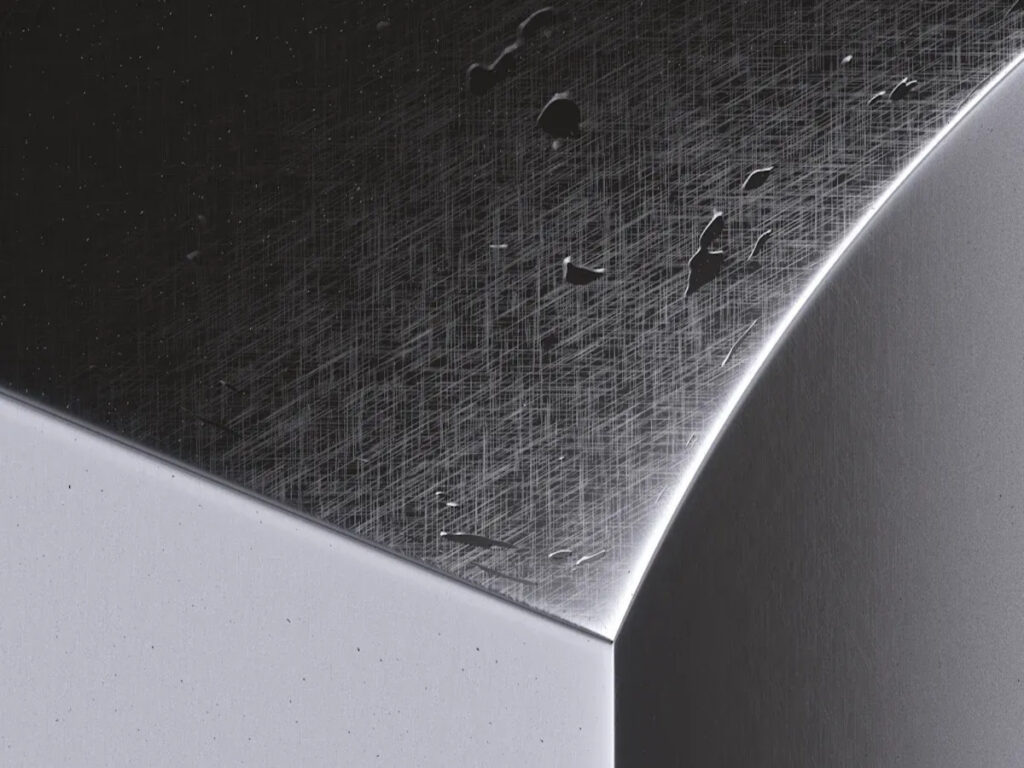
Qu'est-ce que la mesure de la jauge?
La mesure de la jauge montre l'épaisseur ou la finesse du métal. Il compare l’épaisseur du matériau à une taille standard. Des chiffres de calibre plus petits signifient un métal plus épais. Par exemple, 10-le métal de calibre est plus épais que le métal de calibre 20. Ce système permet de conserver la cohérence des matériaux pour la fabrication ou le choix des panneaux..
Les outils mesurent l'épaisseur de la jauge pour vérifier si elle répond aux normes. Cela garantit que le métal est suffisamment solide et flexible pour son usage..
Normes de jauge communes pour les panneaux métalliques
Différents métaux ont des normes de jauge uniques. Voici un tableau simple montrant les numéros de jauge et l'épaisseur:
| Matériel | Numéro de jauge | Épaisseur (pouces) | Épaisseur (mm) |
|---|---|---|---|
| Acier | 10 | 0.1345 | 3.42 |
| Acier inoxydable | 10 | 0.1406 | 3.57 |
| Aluminium | 10 | 0.1019 | 2.59 |
| Acier galvanisé | 10 | 0.1382 | 3.51 |
Le même numéro de calibre donne des épaisseurs différentes pour chaque métal. C'est pourquoi il est important de connaître le type de métal.
Voici un graphique montrant comment l'épaisseur change avec les matériaux:
Comment la jauge affecte la durabilité et la flexibilité
L'épaisseur de la jauge affecte la résistance et la flexibilité du métal. Métaux plus épais, comme de l'acier de calibre 10, gérer les intempéries et les impacts. Ils sont parfaits pour les panneaux extérieurs ou robustes.. Métaux plus fins, comme de l'aluminium de calibre 20, sont plus légers et plus faciles à façonner. Ce sont mieux pour les panneaux intérieurs ou à court terme.
Pensez à l'endroit où votre panneau sera utilisé. Sera-t-il confronté aux intempéries ou à une utilisation intensive? Si oui, choisissez un numéro de jauge inférieur. Pour des besoins plus légers, un numéro de jauge plus élevé fonctionne bien.
Facteurs à considérer lors du choix de l'épaisseur
Durabilité et longévité
Quand choisir la bonne épaisseur, pense à combien de temps ça va durer. Une enseigne durable permet d'économiser de l'argent et des efforts au fil du temps. Les métaux plus épais sont plus résistants et conviennent parfaitement aux zones très fréquentées ou aux endroits présentant des risques de dommages. Par exemple, 0.080-L'aluminium de 1,5 cm est solide et résiste à la flexion dans les endroits très fréquentés..
Comprendre la durabilité, considérez quelques choses importantes. Ceux-ci incluent la météo, vitesse de rouille, et revêtements protecteurs. Voici un tableau simple:
| Facteur quantitatif | Description |
|---|---|
| Conditions environnementales | Des choses comme la pluie, chaleur, et l'air qui peuvent provoquer la rouille plus rapidement. |
| Taux de corrosion | À quelle vitesse le métal s'use dans certaines conditions. |
| Effets des revêtements protecteurs | Comment la peinture ou la poudre peuvent arrêter la rouille et prolonger la durée de vie du métal. |
Si votre panneau se trouve dans des endroits difficiles comme à proximité d'océans salés ou d'usines, Choisir des matériaux forts. L'acier inoxydable ou l'aluminium épais sont de bons choix. Ils combattent la rouille et restent solides pendant des années.
Résistance aux intempéries pour les panneaux extérieurs
Les panneaux extérieurs traitent de la pluie, vent, et le soleil, donc ils doivent être durs. Les métaux plus épais comme l'aluminium de 0,063 pouce ou 0,080 pouce sont parfaits pour une utilisation en extérieur. They handle strong winds and don’t crack or bend from weather changes.
Pour les zones venteuses, choose thicker metals. Par exemple, 0.125-inch aluminum or steel is strong enough for rough weather. If the weather is mild, thinner options like 0.040-inch aluminum work fine.
Adding coatings helps protect signs from weather. Powder coating keeps water and sunlight from damaging the metal. This makes your sign last longer and look good.
Type d'application: Indoor vs. De plein air
Where you place your sign matters for thickness. Indoor signs don’t need to be as thick since they avoid bad weather. Lightweight metals like 0.040-inch aluminum are easy to hang and strong enough for indoor use.
Outdoor signs need to be stronger. If the sign is on a post or in a busy area, use thicker metal like 0.063-inch or 0.080-inch aluminum. These are strong but still light enough to install easily.
Think about how the sign will be used. Will it hang, stand, or be handled often? Picking the right thickness ensures your sign works well and lasts a long time.
Considérations budgétaires et de coûts
When picking metal thickness for your sign, cost matters. Thicker metals are stronger and last longer but cost more. You need to balance your budget with how strong and nice you want the sign to be. Let’s explain this further to help you decide.
How Thickness Impacts Cost
Thicker metal uses more material, so it costs more. Par exemple:
- 0.040-Aluminium de pouces is light, bon marché, and great for indoor signs.
- 0.125-Aluminium de pouces is tough and expensive, perfect for traffic or industrial signs.
If your sign won’t face harsh conditions, thinner metal saves money. But if strength is important, spending more on thicker metal is worth it.
Factors That Affect Pricing
Many things change the price of your metal sign:
- Type of Metal: Aluminum is light and rust-free, making it cheaper. Stainless steel looks fancy but costs more.
- Gauge Thickness: Thicker metal (lower gauge) costs more.
- Size of the Sign: Les signes plus importants ont besoin de plus de matériel, augmenter le prix.
- Finishes and Coatings: Adding paint or powder coating makes it last longer but costs extra.
Conseil: On a tight budget? Use thinner aluminum with a coating. It’s cheap and lasts longer than plain metal.
Comparing Costs by Thickness
Here’s a simple chart showing how thickness changes cost:
| Épaisseur | Utilisation courante | Cost Estimate |
|---|---|---|
| 0.040-Aluminium de pouces | Indoor signs, short outdoor use | Faible |
| 0.063-Aluminium de pouces | Regular outdoor signs | Moyen |
| 0.080-Aluminium de pouces | Windy or tough areas | Haut |
| 0.125-Aluminium de pouces | Heavy-duty needs | Très haut |
Balancing Budget and Quality
You don’t need to overspend for a good sign. Voici comment choisir judicieusement:
- Focus on Needs: Pour les panneaux intérieurs, thinner metal saves money.
- Plan Ahead: Pour les panneaux extérieurs, thicker metal costs more but lasts longer.
- Compare Prices: Check different suppliers to find the best deal.
Note: Ask for samples before buying. This helps you check quality and see if the thickness works for you.
Réflexions finales
Your budget doesn’t have to limit your choices. By knowing how thickness affects cost, you can pick a sign that fits your needs and budget. Whether you want something cheap or long-lasting, there’s an option for everyone.
Recommended Thickness for Metal Traffic Signs and Other Sign Types
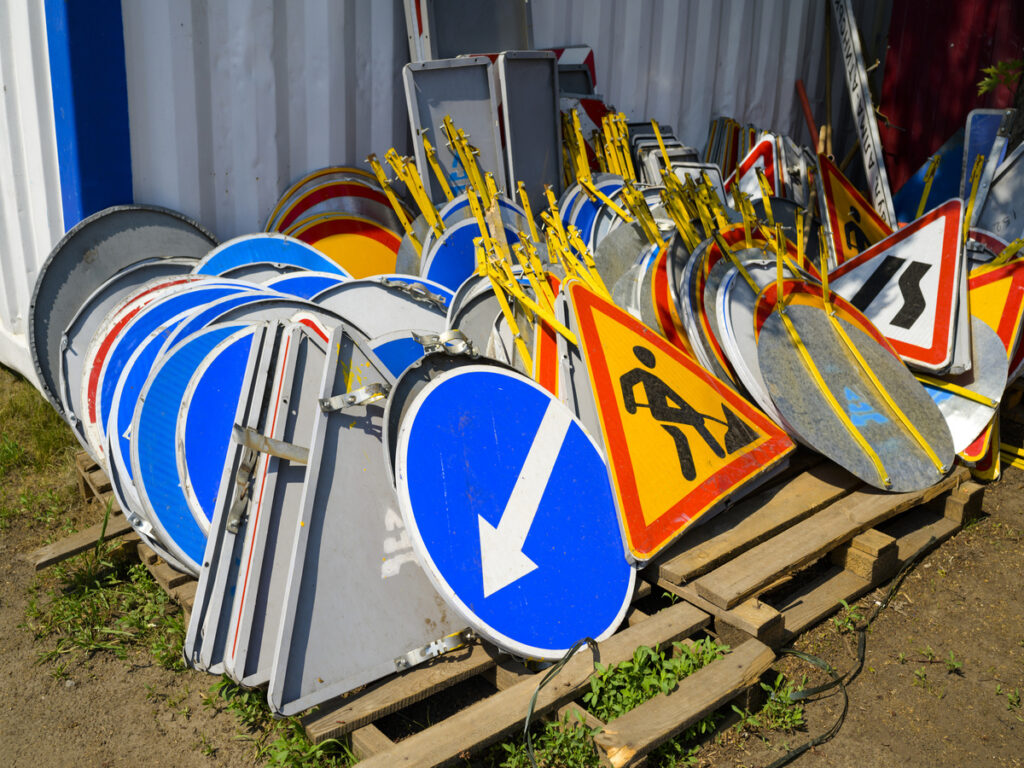
Signes intérieurs: Lightweight Options
Indoor signs don’t face bad weather or heavy use. Thin materials work well for these signs. Aluminum with 0.040-inch thickness is a great choice. It’s easy to hang, bon marché, and looks nice. Use it for office signs, présentation de lobby, ou décorations.
Need something thinner? Essayer 16-jauge en aluminium. It’s light and bends easily, perfect for temporary signs or creative designs. Here’s a simple chart comparing gauge and thickness:
| Jauge | Épaisseur (pouces) | Épaisseur (mm) |
|---|---|---|
| 16 | 0.0598 | 1.518 |
| 14 | 0.0747 | 1.897 |
Conseil: Pour les panneaux intérieurs, focus on looks and easy setup. Lightweight materials save money and are simple to install.
Panneaux extérieurs: Balancing Durability and Weather Resistance
Outdoor signs must survive rain, vent, et la lumière du soleil. Aluminum is a top choice because it doesn’t rust or corrode. For most outdoor signs, 0.063-Aluminium de pouces is strong and light.
In rough weather, thicker metal works better. Utiliser 0.080-inch or 0.125-inch aluminum for windy areas or heavy traffic. These are great for signs on posts or in busy spots.
Here’s a chart comparing materials for outdoor signs:
| Matériel | Durabilité | Résistance aux intempéries |
|---|---|---|
| Aluminium | Longue durée, handles tough weather | Resists rain, vent, et la lumière du soleil |
| Corroplaste | Bon pour une utilisation à court terme | Fades and warps in bad weather |
Note: Adding coatings like powder coating helps signs last longer. It protects metal from water and sunlight, keeping it strong and fresh.
Industrial Signs: Heavy-Duty Applications
Industrial signs face the hardest conditions. They deal with machines, produits chimiques, et porter. Thick materials are needed for these signs. 0.125-Aluminium de pouces is the best choice for factories or construction zones. It doesn’t bend, fissure, or rust easily.
Pour plus de force, utiliser 11-jauge en aluminium. It’s thicker and tougher, ideal for safety signs or warnings. Here’s a chart showing thickness for industrial signs:
| Jauge | Épaisseur (pouces) | Épaisseur (mm) |
|---|---|---|
| 11 | 0.1196 | 3.038 |
| 14 | 0.0747 | 1.897 |
Conseil: For industrial signs, choose strong materials that meet safety rules. Thicker metals keep signs safe and easy to see in tough places.
Metal Traffic Signs: DOT-Compliant Thickness
When choosing metal traffic signs, l'épaisseur est très importante. Le Ministère des Transports (POINT) has strict rules for safety. These rules ensure signs stay strong, visible, and durable in all conditions. If you’re installing traffic signs, follow these rules to avoid problems.
Why DOT-Compliant Thickness Matters
DOT-compliant thickness isn’t just about following rules. It ensures signs can handle tough weather and impacts. Imagine a stop sign bending in strong winds or fading in sunlight. The right thickness prevents this from happening.
Thicker signs last longer and resist damage better. They stay stable on posts, even in windy or snowy areas. Par exemple, 0.125-Aluminium de pouces is often required for highways and busy roads.
Conseil: Check local DOT rules before picking sign thickness. This ensures safety and avoids costly mistakes.
Common Thickness Standards for Metal Traffic Signs
DOT standards depend on the road type and location. Here’s a simple chart of recommended thicknesses:
| Épaisseur | Utilisation courante | Conformité au DOT |
|---|---|---|
| 0.080-Aluminium de pouces | Rues résidentielles, parkings | Meets basic requirements |
| 0.100-Aluminium de pouces | Routes urbaines, trafic modéré | Ideal for durability |
| 0.125-Aluminium de pouces | Autoroutes, zones de trafic intense | Entièrement conforme au point |
For most traffic signs, 0.125-Aluminium de pouces is the best choice. It resists bending and rust, making it great for highways and bad weather.
Choosing the Right Thickness for Your Needs
Not all signs need the thickest metal. For quiet neighborhoods or parking lots, 0.080-Aluminium de pouces fonctionne bien. It’s light, Facile à installer, and meets basic Règles de points.
For busier roads or harsh weather, utiliser 0.100-Aluminium de pouces. It’s stronger but not too heavy. For highways or industrial areas, choisir 0.125-Aluminium de pouces. It’s the most durable for long-term use.
Note: Thicker signs cost more upfront but save money over time. They need less maintenance and fewer replacements.
Réflexions finales
DOT-compliant thickness keeps traffic signs safe, fort, and visible. Whether for a quiet street or a busy highway, the right thickness matters. Always follow DOT rules and pick quality materials for long-lasting signs.
Tips for Picking the Right Thickness
Vérifiez l'environnement
The weather affects how thick your metal sign should be. Think about where the sign will go. Outdoor signs face rain, chaleur, et froid. These can make the metal wear out faster. Humidity causes rust, and temperature changes can crack the material.
For tough weather, use metals with protective coatings. Coatings like hot-dip galvanizing protect against rust. Ils aident votre signe à durer plus longtemps. Here’s a simple chart showing coating thickness for different materials:
| Type de matériau | Steel Thickness (pouces) | Coating Thickness (microns) |
|---|---|---|
| Structural Shapes | <1/16 | 45 |
| Strip and Bar | <1/16 | 45 |
| Plate | <1/16 | 45 |
| Pipe & Tubing | <1/16 | 45 |
| Wire | <1/16 | 35 |
| Reinforcing Bar | >1/4 | 100 |
| Forgings and Castings | >1/4 | 100 |
Thicker coatings protect better in salty or wet places.
Ask Experts
Si vous n'êtes pas sûr, talk to professionals. They can help you pick the right thickness. Experts know which materials work best for different uses. They can also suggest options that fit your budget.
Par exemple, they can recommend coatings for weather protection. They might also explain local rules, like DOT thickness for traffic signs.
Conseil: Tell experts about the weather and purpose of your sign. This helps them give better advice.
Try Samples
Before deciding, test samples of the material. This shows how it works in real life. Look at how strong, flexible, Et durable c'est.
Pour les panneaux extérieurs, check if the material resists rust and handles weather changes. Does it stay strong? Testing helps you avoid mistakes and pick the best option.
Note: Testing costs a bit more but saves money later by preventing problems.
Choosing the right metal thickness for your sign depends on where and how you’ll use it. Thicker metals work best for outdoor or heavy-duty applications, while thinner options are great for indoor signs. Gauge measurements make it easy to find the perfect balance between durability and flexibility.
Pour la pointe: Not sure what to pick? Talk to a supplier or professional. They’ll help you choose a thickness that fits your needs and budget. With the right choice, your sign will look great and last for years!
FAQ
What is the best metal for outdoor signs?
Aluminum is great for outdoor signs. It’s light, Ne rouille pas, and handles bad weather well. For more strength, pick thicker aluminum like 0.063-inch or 0.080-inch.
Conseil: Use a protective coating to help your sign last longer in tough weather.
How do I measure metal thickness for signs?
A gauge tool measures metal thickness easily and accurately. Des chiffres de calibre plus petits signifient un métal plus épais. Par exemple, 10-gauge aluminum is thicker than 20-gauge aluminum.
Pour la pointe: Ask your supplier for a gauge chart to compare thicknesses quickly.
Can thinner metal work for indoor signs?
Oui, thinner metal like 0.040-inch aluminum works well for indoor signs. It’s light, simple to hang, and looks nice. Indoor signs don’t need heavy-duty thickness since they avoid harsh weather.
Note: Using thinner metal saves money but still looks professional.
What thickness is required for traffic signs?
Traffic signs usually need 0.125-inch aluminum to meet DOT rules. This thickness makes them strong and visible in all weather. For quieter areas, 0.080-inch aluminum might be enough.
Rappel: Always check local DOT rules before picking thickness for traffic signs.
How can I save money on metal signs?
Use thinner metal for indoor signs or mild outdoor conditions. Aluminum is affordable and doesn’t rust. Adding a coating can make it last longer without needing thicker metal.
Conseil: Compare prices from different suppliers to get the best deal.

